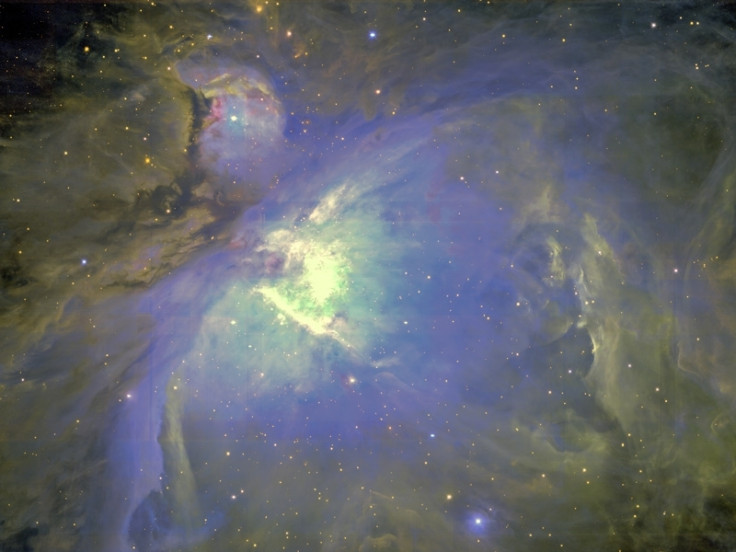China's 'Monkey King' satellite finds mysterious deep space signal while hunting for dark matter
China's DAMPE satellite, which was launched in 2015, aims to find the "cosmic ghost" – dark matter.
China's first space observatory has just detected mysterious deep space signals while searching for dark matter. The DAMPE (Dark Matter Particle Explorer) satellite, which was launched in 2015, aims to find the elusive "cosmic ghost" – dark matter. The invisible dark matter particles are widely considered by scientists to make up around five-sixths of the universe.
DAMPE's primary instrument, which is a stack of narrow, crisscrossed detector strips, has been designed to spot the antimatter particles, electrons and positrons, emitted by cosmic rays. So far, the Chinese satellite has observed around 1.5 million cosmic rays above a certain energy threshold - around 10 trillion electron volts.
Scientists have previously expected to observe a smooth curve when looking at the electrons and positrons pairs. However, DAMPE found an unusual spectral break in the curve and a strange spike, which may be the first hint of an evidence of dark matter.
"It may be evidence of dark matter," but the break in the curve "may be from some other cosmic ray source," astrophysicist Chang Jin, DAMPE's chief scientist and vice director of the Purple Mountain Observatory (PMO) of the Chinese Academy of Sciences (CAS) said, Science Magazine reported.
"This is the first time a space experiment has reported the detailed and precise electron and positron spectrum up to about 5 TeV. In this energy range, we found some unexpected and interesting features. We have detected a spectral break at 0.9 TeV and a possible spike at 1.4 TeV," Chang said, Xinhua reported.
"We never expected such signals," Chang said.
"The spike is very unusual," Fan Yizhong, deputy chief designer of the scientific application system of DAMPE was quoted as saying. "The signals might have originated from either dark matter or pulsars. Even if they were from pulsars, it would be quite a strange astrophysical phenomenon that nobody had known before."
DAMPE is reportedly nicknamed Wukong after the mythical Monkey King Sun Wukong. Space.com reported that the literal translation of the the word Wukong can also mean "understanding the void", thus highlighting the satellite's mission to hunt for dark matter.
The satellite is expected to detect over 10 billion cosmic rays over a projected lifetime of around five years. In comparison, previous space experiments analysing comsic rays have only been able to observe energies up to 2 trillion electron volts, while other ground-based telescope arrays measured energies up to about 5 trillion electron volts, Space.com reported.
"DAMPE has opened a new window for observing the high-energy universe, unveiling new physical phenomena beyond our current understanding," Chang said. "Our data may inspire some new ideas in particle physics and astrophysics."
Although scientists are still unsure as to the likely causes of the observed spectral break, the new observations may pave the way for new theories in particle physics.
"These measurements will inform our understanding of cosmic ray acceleration [and] will tell us about the physical processes in shocks around supernova and the physics of pulsars," David Spergel, an astrophysicist at Princeton University told Science Magazine.
The findings of the new study have been published in the journal Nature.























